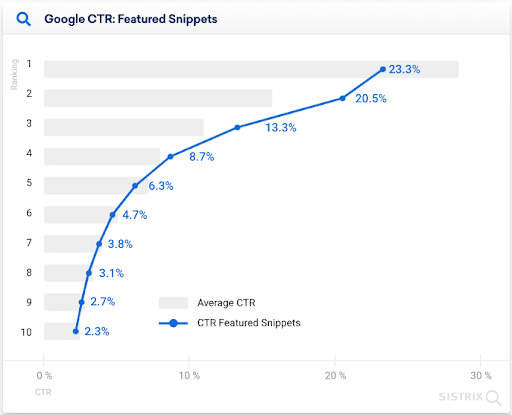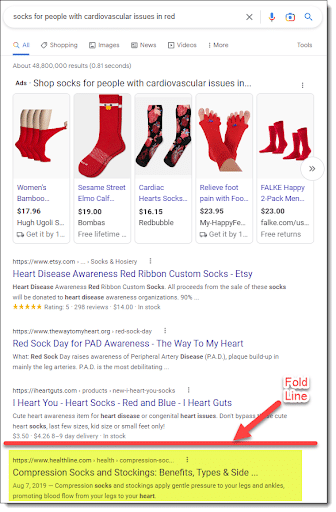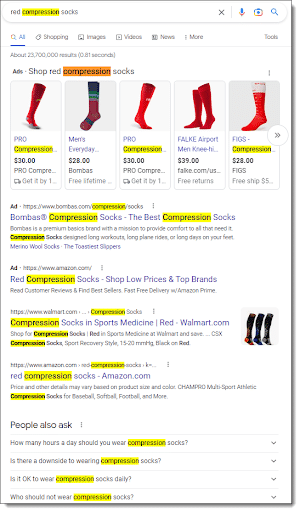What Is Competitor Analysis, What To Look for, and Why You Should Be Looking at Your Competitors More Often
January 13, 2023
11 Minute Read

Competition has been a driving force behind some of the greatest achievements throughout history. The great space race of the 1960s between the U.S. and Russia. Microsoft vs Apple in the 90s. The Cola Wars. The list goes on. It’s a competitive spirit where we push ourselves further and discover new thresholds of success. They say nothing lasts forever, and your successor is always breathing down your neck, waiting to overtake you. In business, rising to the top may come easy with some timely decision making and a lot of luck… but staying there is the real challenge. Today, we’re going to talk about what competitor analysis is, what to look for, and why you should be looking at your competitors more often.

What Is Competitor Analysis?
Competitor analysis, in its most basic form, is the process of researching competitors to learn more about them. Analyzing their general strengths and weaknesses can extend far beyond just their digital marketing strategies too. For our purposes we’ll focus on digital marketing aspects such keyword analysis, performance & traffic metrics, site layout, content, and conversion funnels.
In the digital marketing world, there is no more of a visual representation of where you stack up against your competition than the search engine results page. There are ads that can be manipulated with monetary investment, true, but the organic results are the true indication of where you stand, and the difference between a #1 ranking and a #6 ranking can be monumental.

Competitive Keyword Analysis
Keywords are the launching point for any organic search and can be categorized in many ways. To better leverage against competitors, you’ll want to analyze the types of keywords they’re utilizing in their optimization and incorporate those keywords (and their variations) into your optimization strategy. And this strategy can extend beyond on-page optimization and into other aspects of marketing as well such as print, TV, Radio, and even paid ads. When there is one, cohesive, convertible message being relayed to your audience across all marketing channels, your brand builds strength in recognition and reputation.
Types of Keywords
Keywords are nothing without their intent, and search engine algorithms have become more sophisticated in displaying more accurate results in part by the use of Google’s Rankbrain. We will dive more into keyword intent later, but for now let’s discuss keyword types and how they can impact how you rank amongst your competitors.
Longtail Keywords
These are queries that are not concise and consist of 3 or more words. The search engines have become more adept at providing results for these searches, but they can oftentimes be TOO specific and the results are less useful for the user.
Example: A search for “socks for people with cardiovascular issues in red” provides the somewhat scattered results below when what the user actually wants are simply red compression socks. But instead, they see shopping results for socks with hearts on them and organic results for heart health organizations. There is no mention of “compression socks” until the 4th results, which in this instance, appeared below the fold.

Short-Tail Keywords
Short-tail keywords are general search queries that typically contain 1-3 words while covering a broad topic. Short-tail keywords generally have higher search volume than long-tail keywords, which means you’re targeting a bigger pool of potential visitors.
Example: While the long-tail version above was not very helpful for the user, a short-tail keyword will produce what is likely a far more desired result based on the user’s intent.

Competitive Keyword Funnels
Simply put, keyword funnels indicate the stages of a user’s conversion journey. These funnels help categorize keywords based on popular search terms as part of competitive keyword research analysis.
So how do we use this analysis to our competitive advantage? Once you’ve pulled the list of your competitor’s keywords (AHREFs and other similar tools can help with this), see which stage of the conversion funnel the majority of them fit into. Once you’ve identified which of the three funnel stages (listed below) is the bulk, you will know what type of customers they are attracting and can leverage those same keywords to outrank and infiltrate their conversion process.
Top Funnel Keywords
These types of keywords are not often useful in terms of what you want to create a strategy around.
They are often very highly competitive and the top results will trend towards websites with a very high domain authority. To stick with our above example, “socks” would be a top of funnel keyword. We don’t know if the user is interested in purchasing socks, learning about how they are made, their history, or a baseball team, so it becomes difficult to guide them in your direction.
Middle Funnel Keywords
These are the keywords you want to focus on to pull in new customers.
With these, the user has in a way stated their intent to buy, including more specific information in the search query. For example a search for “socks for sale” indicates that they want to find websites or brick & mortar locations where they can purchase socks. However, we don’t yet know which type of socks they are interested in (color, size, style, brand, price etc.) but we can tailor our strategy to include related keywords through on-page content optimization (more on that later).
Bottom Funnel Keywords
Now you’ve got them!
The user has told you exactly what they want, and you have it for them. These keywords will be somewhat long-tail, but more precise in intent. An example would be “red compression socks for sale”. This indicates the product, the product type, the color, and that they want to purchase them and not just do research on them.

Keyword Intent
We’ve mentioned keyword intent quite a bit, so what exactly is it? This metric of keyword research shows us in general terms what the user wants to do with the search results information. There are four types of keyword intent:
- Informational – The user wants to find an answer to a specific question.
- Example: “what socks are good for circulation”
- Navigational – The user wants to find a specific page or site.
- Example: “socks on amazon”
- Commercial – The user wants to investigate brands or services.
- Example: “best compression socks”
- Transactional – The user wants to complete an action (conversion).
- Example:“where to buy red compression socks”
Identifying the intent of a keyword will tell you which type of webpage you want to direct the visitor to. Informational intent may be an FAQ page. Navigational intent may be a long-tailed keyword based on their past research and they are returning to make a purchase on a product page. Commercial is more likely to coincide with the research phase of a purchase on a category page. Finally, transactional intent indicates the user is ready to take the plunge and convert from a product page or an RFP, for example.
Competitive Performance & Traffic Metrics
Wouldn’t you love to know exactly where your competitors are deriving their organic traffic? Perhaps a peek at their audience demographics or engagement metrics? While there are platforms where you can get an overarching idea of some of these metrics, such as SimilarWeb, by and large you will never know the full extent of their strategy. But don’t let that discourage you.
For a fee, platforms such as AHREFs and SEMRush offer the opportunity for more in depth analysis into keywords, backlink profiles, and you can even get a more indepth look into where your site stacks up among your competitor’s organic competitors. Not all competitors will have the same comp set, and you may end up discovering a new competitor you hadn’t even considered focusing on as a result of your research. In general, investing the time to research your competitor’s performance will help you hone in on which specific areas you can exploit to gain that competitive edge.
Competitor Content Analysis
While gathering traffic and performance metrics of your comp set may be tricky, one thing always available is to analyze their content. It’s all available to you right on their website (or sometimes behind a paywall), just waiting for you to steal little nuggets of ideas you can develop into beautiful, long-form, convertible content.
While you can’t see which content pulls the most of their traffic, you can draw a line between their keywords and the content topics to create your own list of viable keywords/topics. If they have a blog or a resource center, then you’ve already got most of the content categorized for you.
Competitor Webpage Layout
FInally, after you have exhausted yourself looking at keywords and content, it’s time to dig deep and focus on website layout. Take a look at their on-page purchase funnels and where their users convert; whether it’s from a purchase, form submission, newsletter sign-up page, account creation, installing an app etc. How many clicks does it take to get to conversion? Is the conversion link obvious or hidden in text? Is the RPF form confusing or does it have poor functionality? Gather as much information as you can and try to emulate those positive practices on your own site.
A small change to the layout of a page can make a big difference. For example, you may have a very similar contact us page to your most staunch competitor, but they include more required fields (phone number, email address etc.). Some people prefer speaking directly with a business, while others prefer email. If you aren’t offering both types of people their preferred option, you’re cutting your potential business.
Talk to Those in the Know
BFO’s team of highly skilled digital marketing nerds have mastered the methods of competitive analysis and research for all aspects of organic search. If you would like to learn more about your competitors and how to slowly squeeze them out of the market, contact us today and we’ll guide you to that beautiful place called “conversion heaven”.

Adam Woodburn
As one of our SEO Analysts, Adam may very well be the Poster Child for BFO. He is pretty much a compilation of what our company stands for – charismatic, passionate, creative, bold, energetic, flexible and FUN! With 14 years of digital marketing experience under his belt and a personality that lights up the room, (including the time he dressed up as Cindy Lou Who for our holiday e-card video), Adam makes us all happy to be at BFO and so very happy to have him in our midst.
CATEGORIES
SUBSCRIBE TO OUR BLOG
Stay up to date with the latest industry best practices in digital marketing!























.png?width=339&height=179&name=Webinar%20Banner%20(1).png)



.png?width=339&height=179&name=July%20Webinar%20(Newsletter).png)

.png?width=339&height=179&name=Webinar%20Banner-April-02%20(1).png)
%20(4).png?width=339&height=179&name=Webinar%20Banner-May-02%20(1)%20(4).png)




.png?width=339&height=179&name=March%202023%20Webinar%20Ad%20(autoresponder).png)

















































